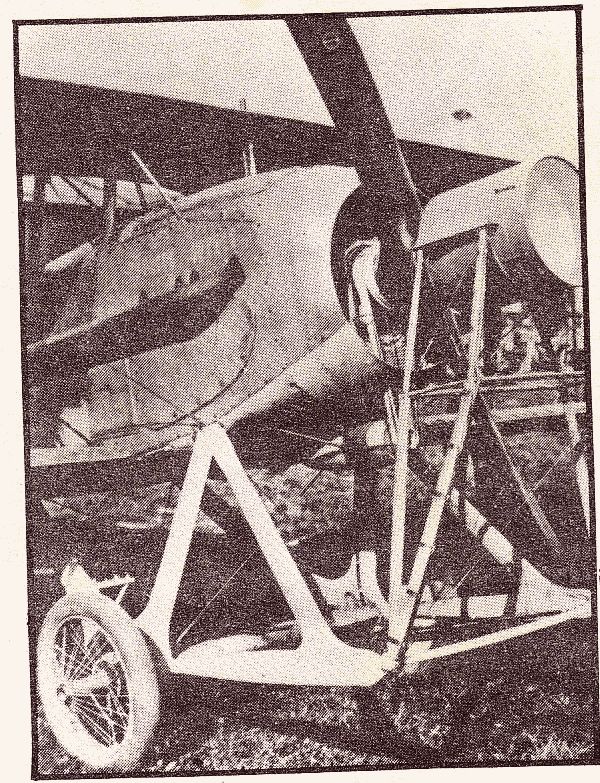
Early Aviation
Discuss World War I and the early years of aviation thru 1934.
Discuss World War I and the early years of aviation thru 1934.
Hosted by Jim Starkweather
An interesting model subject Spad XI
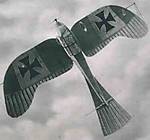
wombat58

Joined: March 26, 2009
KitMaker: 366 posts
AeroScale: 309 posts

Posted: Saturday, August 15, 2009 - 06:06 PM UTC
Found this old photo and thought it might make a very interesting modelling subject. It's a high powered searchlight fitted to a Spad11 for night flying activities. Looks like something you would see on the front of a steam train, and imagine what it must have done to the centre of gravity. 

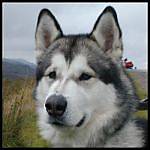
Kornbeef

Joined: November 06, 2005
KitMaker: 1,667 posts
AeroScale: 1,551 posts

Posted: Saturday, August 15, 2009 - 07:32 PM UTC
Airflow and power too? is that a drivebelt pulley and a generator bolted under the front? I just have visions of the whole thing tipping back into the prop, unless theres another mounting point I cant see there is only the one each side.
I just hope the pilot had a chute.
Keith
I just hope the pilot had a chute.
Keith
ludwig113

Joined: February 05, 2008
KitMaker: 1,381 posts
AeroScale: 1,110 posts

Posted: Saturday, August 15, 2009 - 08:19 PM UTC
i'd guess there was some sort of bearing on the front of the prop to stop it moving back and forth...
thehannaman

Joined: April 04, 2006
KitMaker: 279 posts
AeroScale: 194 posts

Posted: Sunday, August 16, 2009 - 04:07 AM UTC
Cool picture! Yeah, I imagine that the prop shaft is connected to the rear of the light. There would probably be a TON of flex in that assembly otherwise.
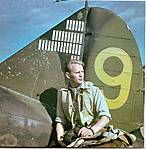
TuomasH

Joined: September 10, 2008
KitMaker: 470 posts
AeroScale: 279 posts

Posted: Sunday, August 16, 2009 - 04:19 AM UTC
Is this the excuse for all early UFO sightings? It must have been nice target for AA also 


JackFlash

Joined: January 25, 2004
KitMaker: 11,669 posts
AeroScale: 11,011 posts

Posted: Saturday, August 22, 2009 - 09:31 AM UTC
Now, can anyone describe the purpose of this special Spad? Why would you need a spotlight in the nose of an aircraft. Is it American, British, French or Italian? What type of Spad is it attached to? How many were made?
guitarlute101

Joined: December 18, 2006
KitMaker: 1,121 posts
AeroScale: 1,063 posts

Posted: Saturday, August 22, 2009 - 03:27 PM UTC
Quoted Text
Now, can anyone describe the purpose of this special Spad? Why would you need a spotlight in the nose of an aircraft. Is it American, British, French or Italian? What type of Spad is it attached to? How many were made?
The search light is attached to a French SPAD 11 for nightfighter operations and was designated a SPAD 11 Cn2 nightfighter. Only one prototype was built.
Mark

wombat58

Joined: March 26, 2009
KitMaker: 366 posts
AeroScale: 309 posts

Posted: Thursday, August 27, 2009 - 03:32 PM UTC
Thanks Mark for your input, clears up a few unanswered questions. Knowing now that only one prototype was built I guess it was a failure.
Cheers
Des.
guitarlute101

Joined: December 18, 2006
KitMaker: 1,121 posts
AeroScale: 1,063 posts

Posted: Thursday, August 27, 2009 - 04:03 PM UTC
No problem, Des. You're right, it would make a very interesting modelling subject.
Mark

JackFlash

Joined: January 25, 2004
KitMaker: 11,669 posts
AeroScale: 11,011 posts

Posted: Thursday, August 27, 2009 - 06:14 PM UTC

A couple of things to note here. Mark of course is correct. The Spad XI 2 seat prototype was based on the Spad XII prototype as well. The keynote appearance of both is the engine is totally enclosed by the cowling panels. On other Spad types the engine cylinder heads were additionally covered by small perforated coveres
The searchlight was to be used for Zeppelin or Bomber spotting over Paris. "Designed by Louis Béchereau in 1916, the SPAD S.XI reconnaissance bomber entered service in 1917. Plagued with engine problems and difficult to fly when armed with bombs, it was withdrawn from French service in June 1918." But the Americans used it til the end of the war.
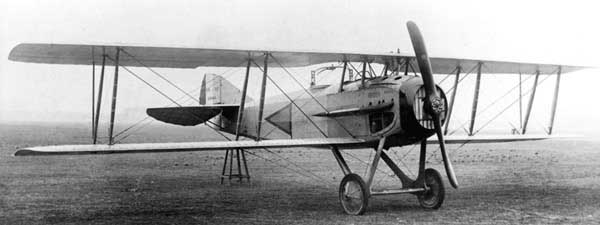
Excellent research Mark!

JackFlash

Joined: January 25, 2004
KitMaker: 11,669 posts
AeroScale: 11,011 posts

Posted: Thursday, August 27, 2009 - 06:18 PM UTC
Country: France
Manufacturer: Société Anonyme Pour L'Aviation et ses Dérivés
Type: Reconnaissance/light bomber
Entered Service: 1917
Number Built:
Engine: Hispano-Suiza 8BE, 8-cylinder, liquid cooled inline, 235 hp
Wing Span: 35 ft 10 in (11.23 m)
Length: 25 ft 5 in (7.75 m)
Height: 8 ft 6 in (2.59 m)
Empty Weight:
Gross Weight: 2,310 lb (1,048 kg)
Max Speed: 109 mph (176 km/h) at 6,500 ft (2,000 m)
Ceiling: 22,965 ft (7,000 m)
Endurance: 2 hours 15 minutes
Crew: 2
Armament: 2-3 machine guns
154 lb (70 kg) of bombs
Manufacturer: Société Anonyme Pour L'Aviation et ses Dérivés
Type: Reconnaissance/light bomber
Entered Service: 1917
Number Built:
Engine: Hispano-Suiza 8BE, 8-cylinder, liquid cooled inline, 235 hp
Wing Span: 35 ft 10 in (11.23 m)
Length: 25 ft 5 in (7.75 m)
Height: 8 ft 6 in (2.59 m)
Empty Weight:
Gross Weight: 2,310 lb (1,048 kg)
Max Speed: 109 mph (176 km/h) at 6,500 ft (2,000 m)
Ceiling: 22,965 ft (7,000 m)
Endurance: 2 hours 15 minutes
Crew: 2
Armament: 2-3 machine guns
154 lb (70 kg) of bombs

JackFlash

Joined: January 25, 2004
KitMaker: 11,669 posts
AeroScale: 11,011 posts

Posted: Thursday, August 27, 2009 - 06:25 PM UTC
One USAS unit used the Spad XI for a short period. The 13th Aero ("Grim Reapers")
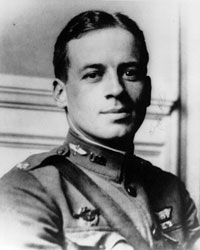
Having graduated from the Harvard Law School in 1914, Charles John Biddle was admitted to the Pennsylvania bar and was employed by the law firm of Drinker, Biddle and Reath before crossing the Atlantic to enlist in the French Foreign Legion on 13 April 1917. He soon transferred to the French aviation service and after training at Avord, Pau and Le Plessis-Belleville, he was posted to Escadrille N73 on 28 July 1917. In January 1918 he transferred to the United States Signal Corps, Aviation Section, receiving a Captain's commission on 12 January 1918. Assigned to the 103rd Aero Squadron on 14 February, he was wounded in action on 15 May 1918 near Dunkerque. On 22 June 1918 he transferred to the 13th Aero Squadron. On 25 October 1918 he assumed command of the 4th Pursuit Group and was promoted to Major on 1 November 1918. On 19 December he returned to the United States where he was assigned to the Air Service Headquarters in Washington, D.C. on 1 January 1919. Biddle was discharged from the army on 25 January 1919.
Post-war he wrote "The Way of the Eagle." Biddle died at "Andalusia," the family estate on the Delaware River in lower Bensalem Township, Pennsylvania.

Having graduated from the Harvard Law School in 1914, Charles John Biddle was admitted to the Pennsylvania bar and was employed by the law firm of Drinker, Biddle and Reath before crossing the Atlantic to enlist in the French Foreign Legion on 13 April 1917. He soon transferred to the French aviation service and after training at Avord, Pau and Le Plessis-Belleville, he was posted to Escadrille N73 on 28 July 1917. In January 1918 he transferred to the United States Signal Corps, Aviation Section, receiving a Captain's commission on 12 January 1918. Assigned to the 103rd Aero Squadron on 14 February, he was wounded in action on 15 May 1918 near Dunkerque. On 22 June 1918 he transferred to the 13th Aero Squadron. On 25 October 1918 he assumed command of the 4th Pursuit Group and was promoted to Major on 1 November 1918. On 19 December he returned to the United States where he was assigned to the Air Service Headquarters in Washington, D.C. on 1 January 1919. Biddle was discharged from the army on 25 January 1919.
Post-war he wrote "The Way of the Eagle." Biddle died at "Andalusia," the family estate on the Delaware River in lower Bensalem Township, Pennsylvania.
mbittner

Joined: June 07, 2005
KitMaker: 191 posts
AeroScale: 171 posts

Posted: Friday, August 28, 2009 - 01:00 AM UTC
There was also the SPAD XVI, a derivative of the XI. The only two-seat SPAD in existence is at the Smithsonian, in the Udvar-Hazy center, and it's a XVI. Billy Mitchell's machine, if memory serves.
There were models of the XI out in 1/72, one by Rosemont (vac) and the other by Planet (resin). Unfortunately neither were accurate - the Planet's fuselage was closest, while the Rosemont wings were closest, but the chord was too short. Definitely would like to see someone else release an updated and correct kit out. Believe it or not, the XI/XVI were built in larger numbers than one would think.
The best source of reference is the big FMP French tome. However, even their drawings are off of the type. There's a "slope" to the rear fuselage they left out of the drawings.
Can you tell I've researched this a little?
There were models of the XI out in 1/72, one by Rosemont (vac) and the other by Planet (resin). Unfortunately neither were accurate - the Planet's fuselage was closest, while the Rosemont wings were closest, but the chord was too short. Definitely would like to see someone else release an updated and correct kit out. Believe it or not, the XI/XVI were built in larger numbers than one would think.
The best source of reference is the big FMP French tome. However, even their drawings are off of the type. There's a "slope" to the rear fuselage they left out of the drawings.
Can you tell I've researched this a little?

 |







